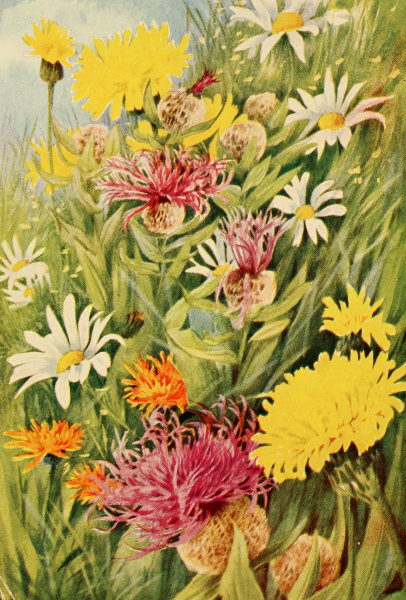The October 15, 1898 issue of The Girl’s Own Paper included in its contents a lovely autumnal flower poem by Lizzie Deas. The poem, titled Hawkweed, describes the distinct charms of autumn along with the hawkweed flower itself. It fits neatly in here at The New Leaf Journal, where we have published articles about the unique charms of the individual seasons and of autumn in particular. Below, you will find a brief introduction to the poet and the poem, Hawkweed, reprinted in its entirety with its original photograph.

Who Was Lizzie Deas?
Lizzie Deas was a writer and poet who was active in the late ninteenth and early twentieth centuries. My brief research turned up two additional works that came from her pen.
First, in 1898, she authored a book titled Flower Favourites, their Legends, Symbolism, and Significance. Nature magazine published the following review of the book on May 5, 1898:
MANY pretty stories concerning common flowers have been collected from folk-lore and classic myths by the author, and are presented here in an attractive setting. The nursery traditions and love legends referring to flowers and flower-names are numerous and interesting enough, but very little attention is devoted to the subject of “plants and flowers in their widest relationships” referred to in the preface.
Nature (May 5, 1898)
The text that came up most often in my searches for Deas was her 1914 short story, The Christmas Rose. You will find it reprinted here.
With the brief introduction complete, let us proceed to her 1898 poem, Hawkweed.
“Hawkweed” by Lizzie Deas
Somehow these flowers that late in autumn show,
So very rich a glow,
In summer seem to make but poor display,
There are so many flowers more beautiful than they.
I can but think that through the sunlit hours,
These golden-petaled flowers,
With no attempt to shine while earth is bright,
Are yet at work for us absorbing warmth and light.
Of this I'm sure, they do but hide their store
Till we shall need it more;
For see, as summer wanes, what beauty lies—
What consolation, too, within their sun-filled eyes.
Some lovely souls there are that, like these flowers,
Shine least in brightest hours;
Only when shadows fall we learn to know
The beauty they possess, the sunshine they bestow.
